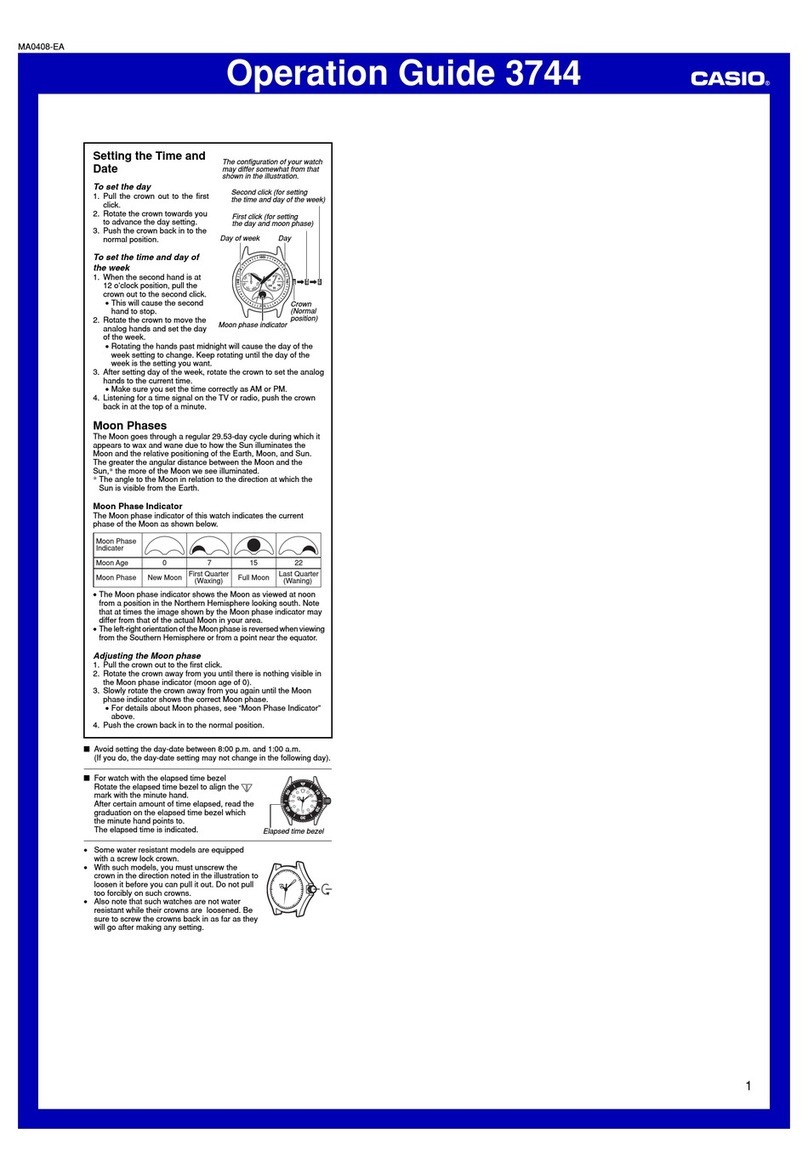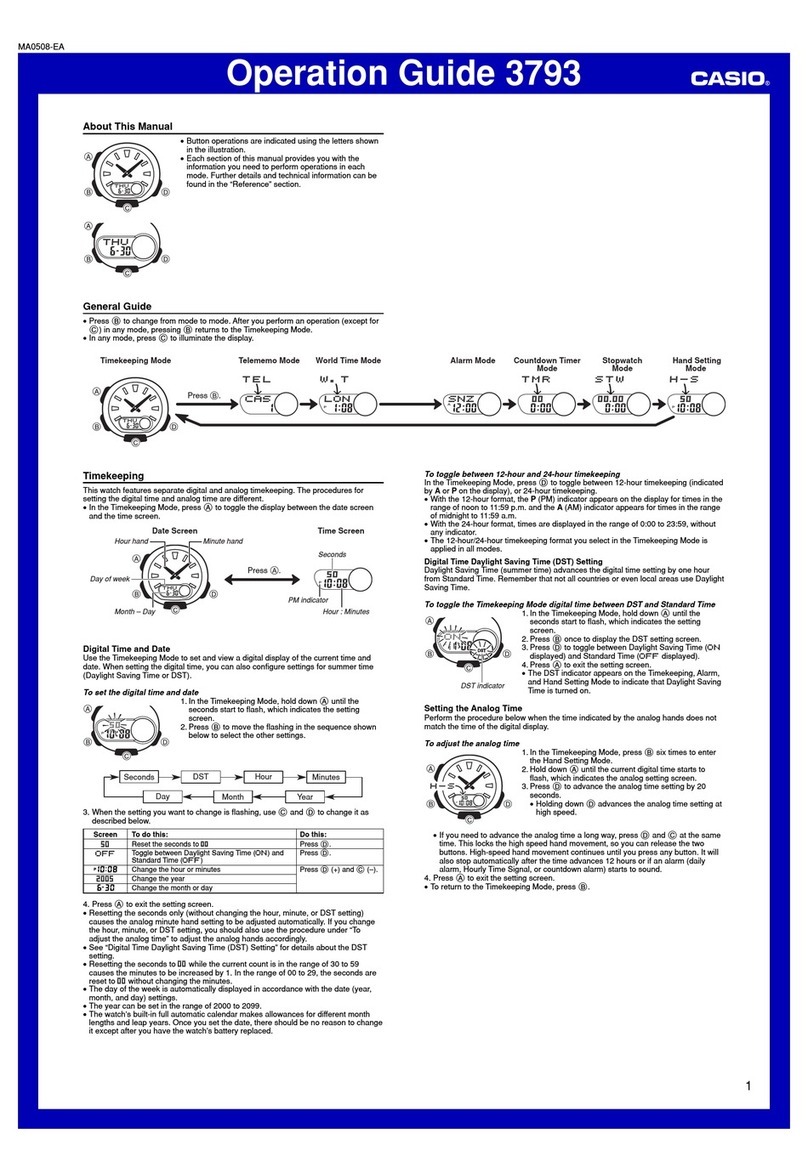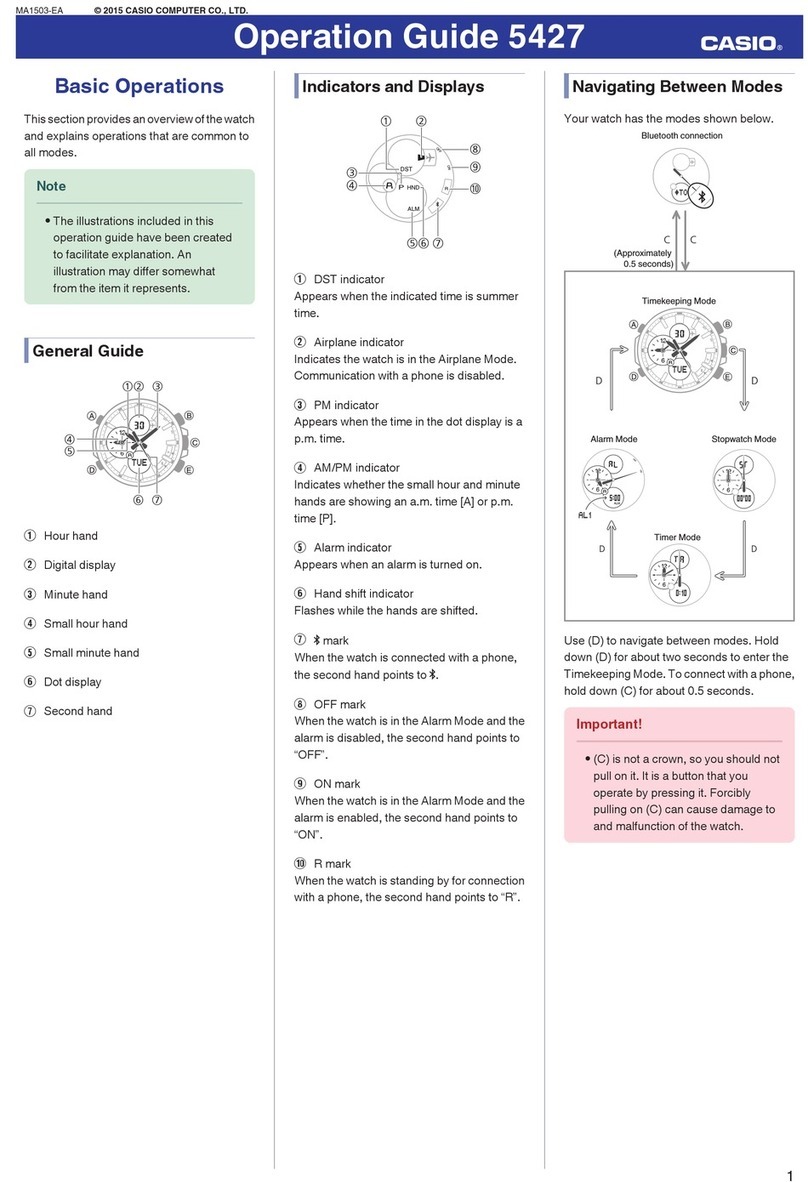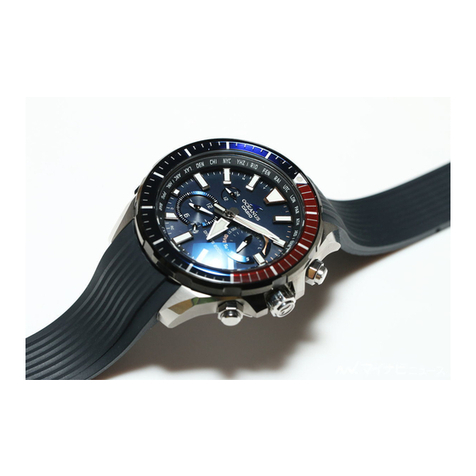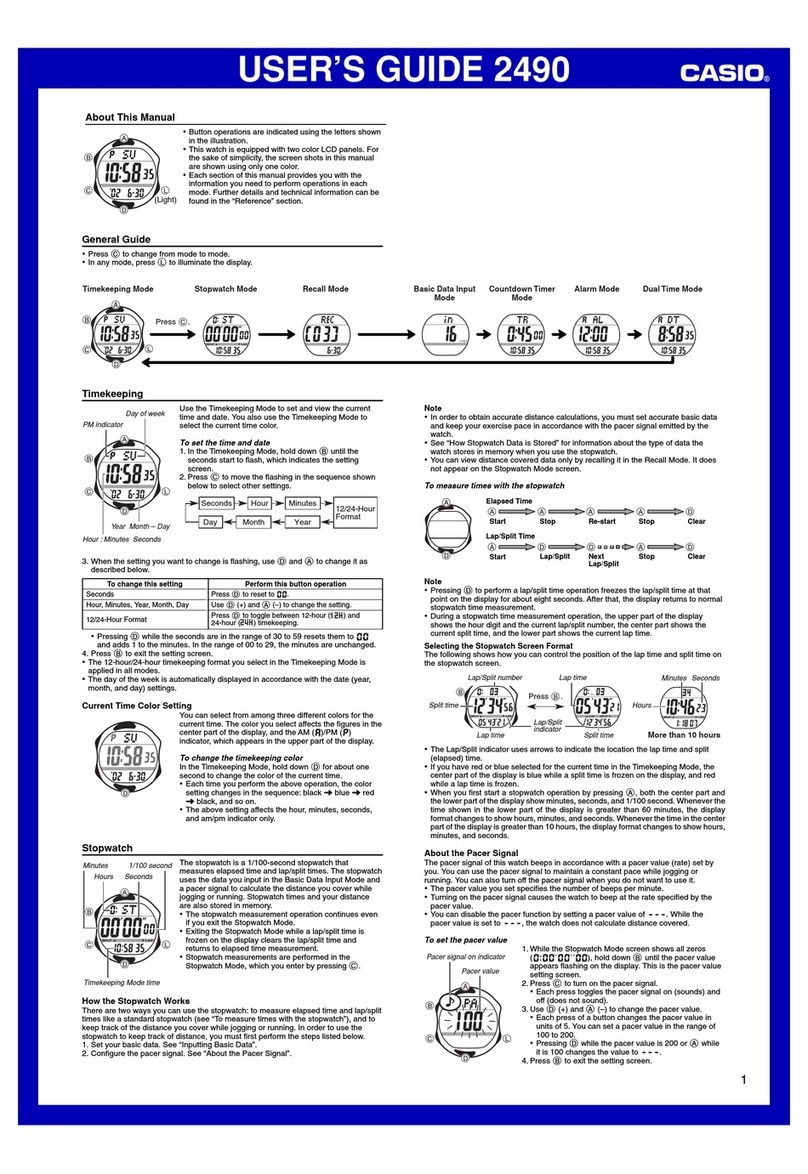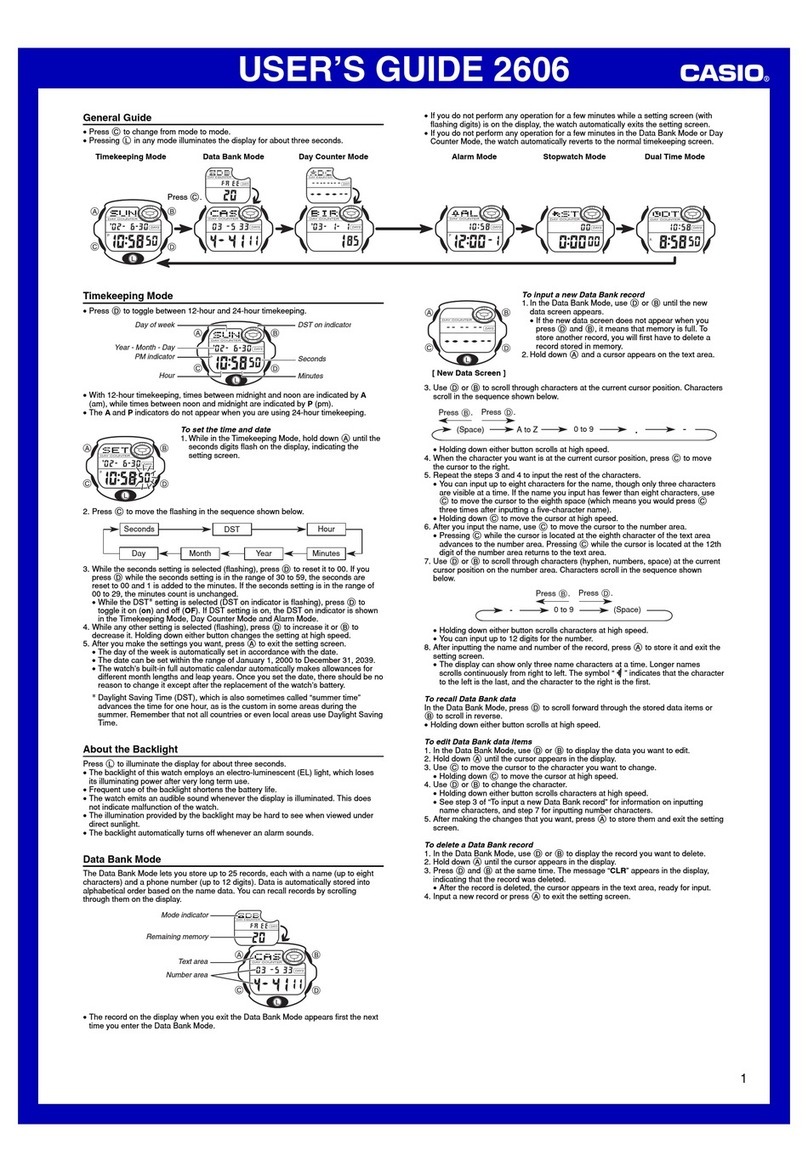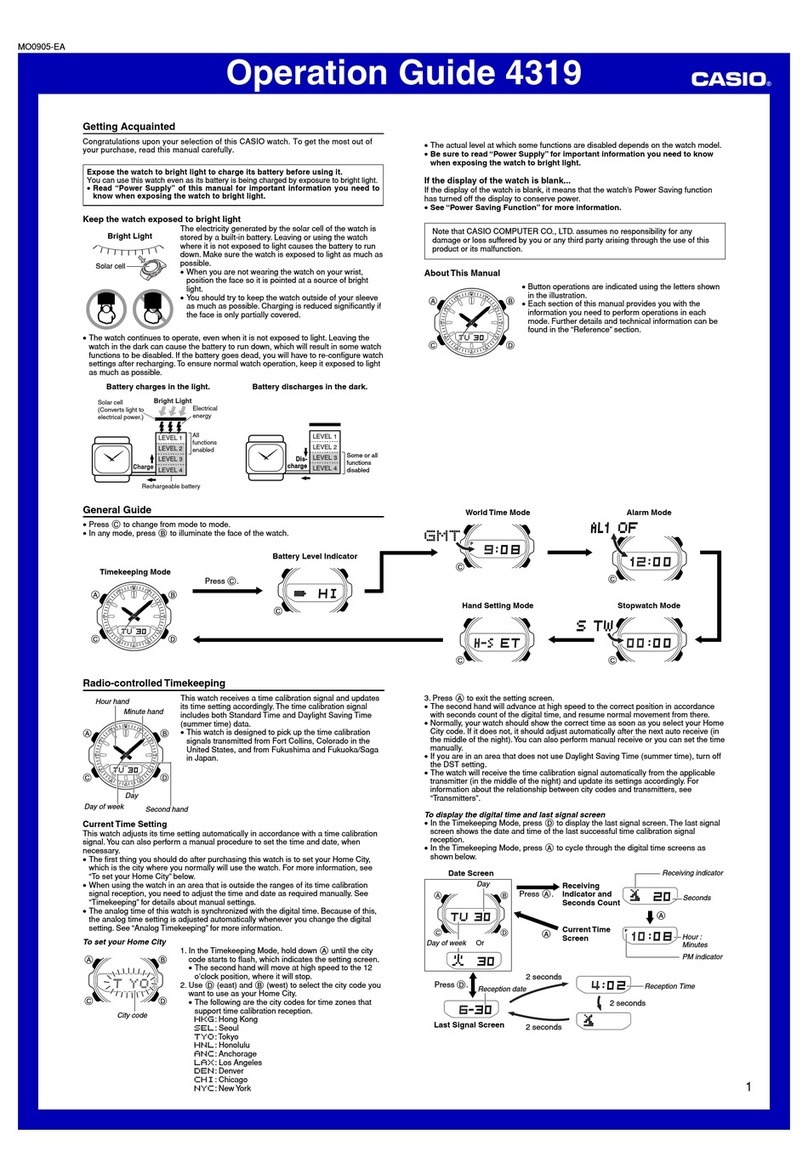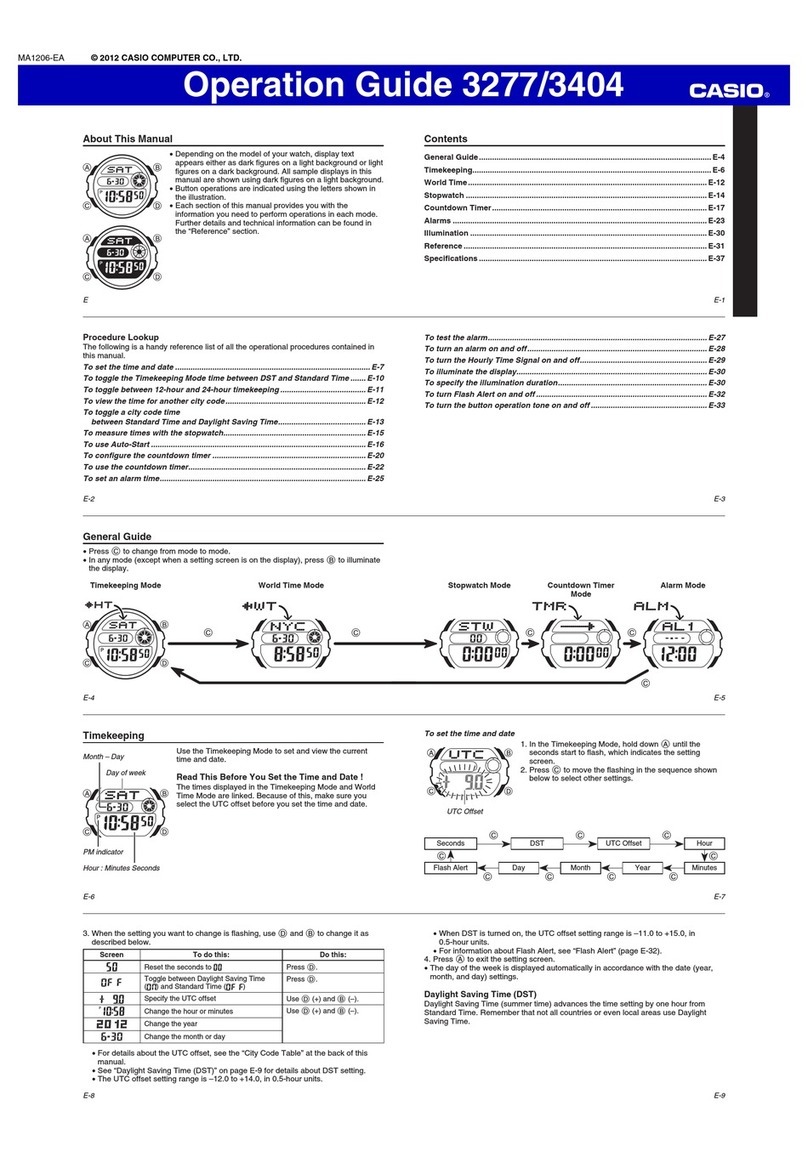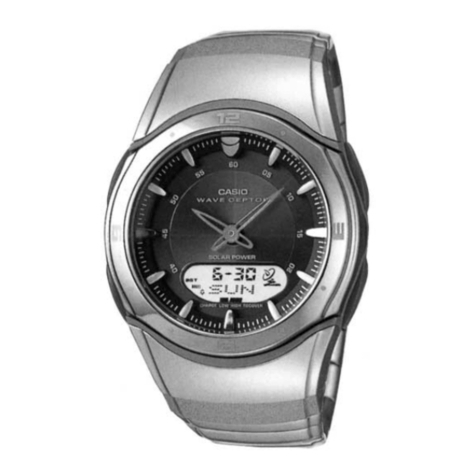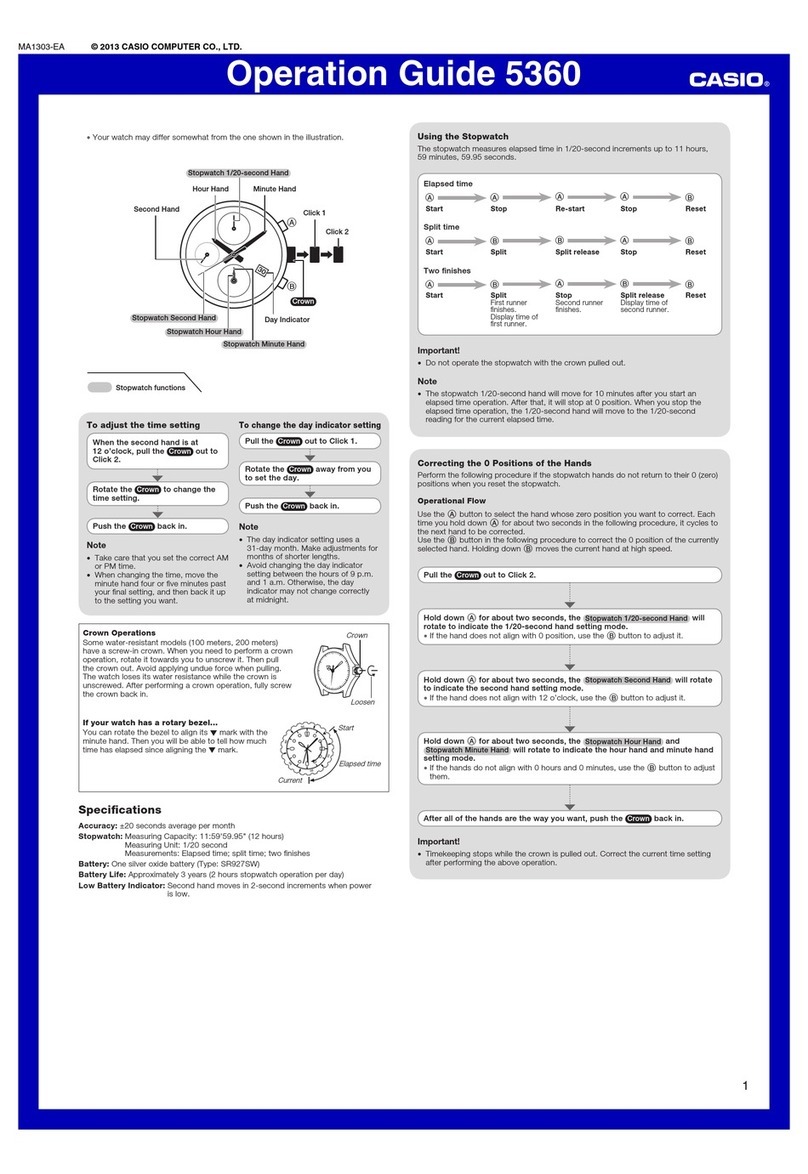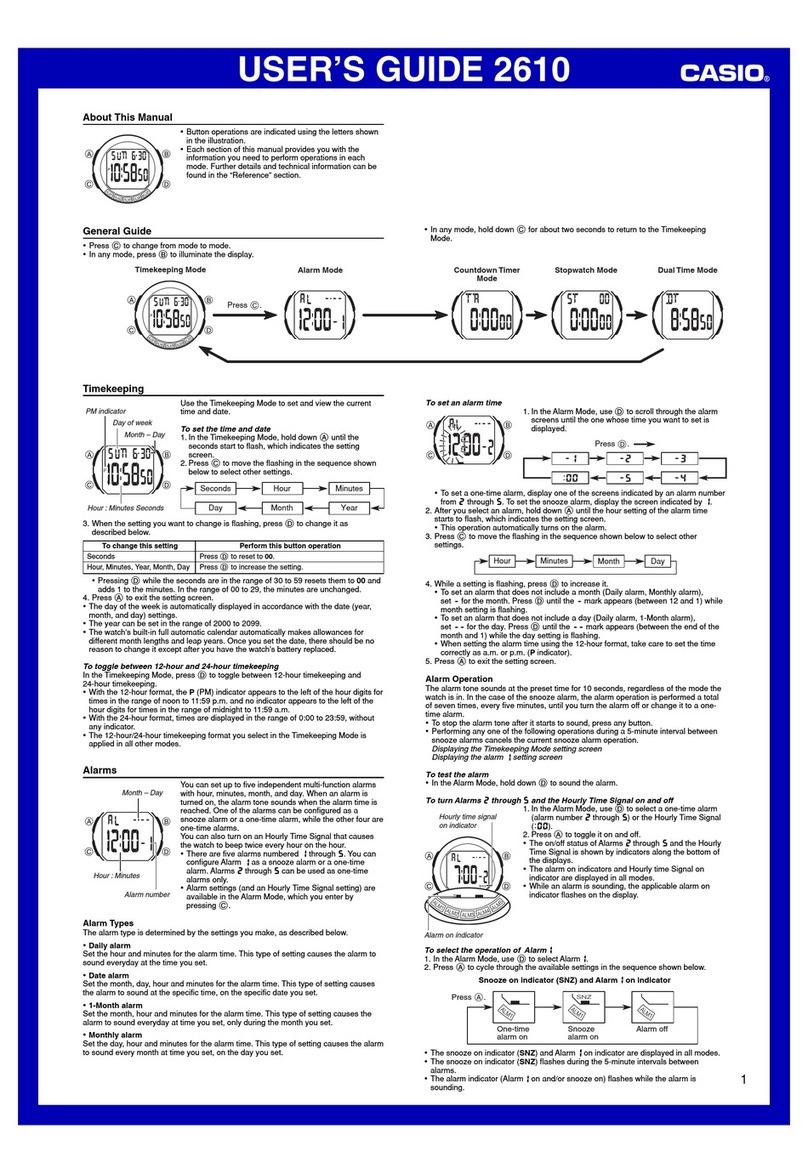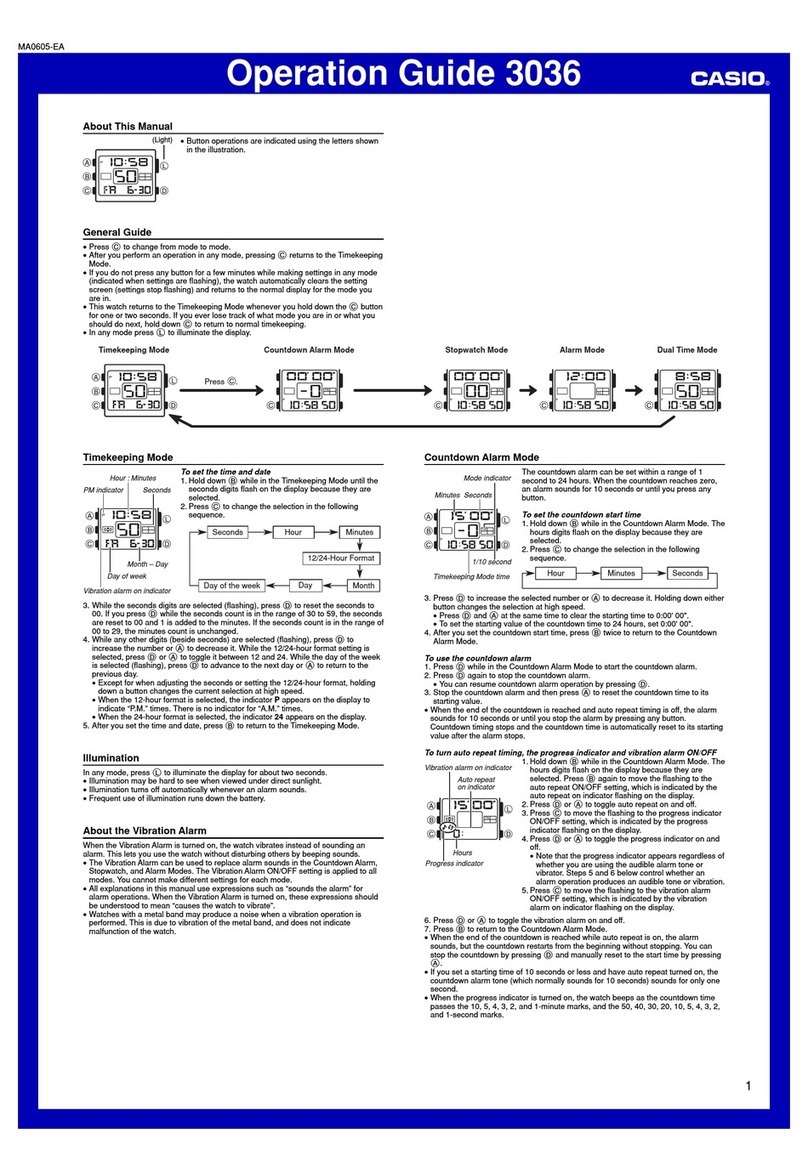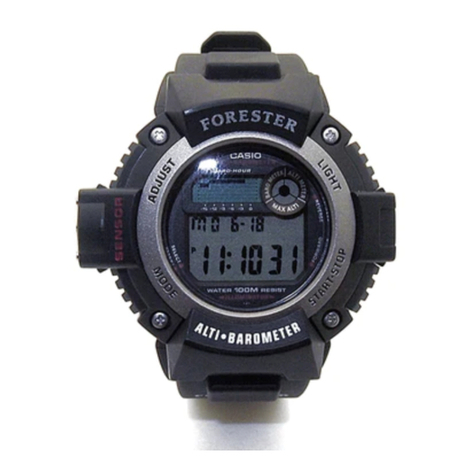
5
Operation Guide 5122
Using the Alarm
When the alarm is turned on, an alarm will sound for about 10 seconds each day
when the time in the Timekeeping Mode reaches the preset alarm time. This is true
even if the watch is not in the Timekeeping Mode.
Hand Functions
x Second Hand: Indicates the current alarm ON/OFF
setting.
v Left Dial hand: Points to AL.
b Right Dial Hands: Indicate the current alarm time
setting in 24-hour format.
To change the alarm time setting
Use1. Cto rotate the vLeft Dial hand until AL is located next to the pointer ( ).
This indicates the Alarm Mode.•
Use2. D(+) and B(–) to change the alarm time setting.
Each press of either button will move the•bRight Dial Hands one minute.
Holding down•Dor Bwill start high-speed hand movement in the applicable
direction. To stop high-speed hand movement, press any button.
The alarm always works based on the time kept in the Timekeeping Mode.•
The watch will return to the Timekeeping Mode automatically if you do not•
perform any operation in the Alarm Mode for about two or three minutes.
To turn the alarm on or off
In the Alarm Mode, press Ato toggle the alarm on and off. The xSecond Hand will
indicate the current ON/OFF setting.
To stop the alarm
Press any button.
Adjusting Home Positions
Strong magnetism or impact can cause the hands and/or date of the watch to be
off, even if the watch is able to perform the signal receive operation. If this happens,
perform the applicable home position adjustment procedures in this section.
Hand home position adjustment is not required if the time and day settings are•
correct.
Note
Any time after you enter the home position adjustment mode in step 1 of the following
procedure, you can return to the Timekeeping Mode by pressing A. The watch also
will return to the Timekeeping Mode automatically if you do not perform any operation
for about two or three minutes in the home position adjustment mode. In either case,
any adjustments you made before the watch returned to the Timekeeping Mode will
be applied.
To adjust home positions
Use1. Aas shown under “Setting Modes” to enter the
“Home Position Adjustment” mode.
The watch will exit the home position adjustment mode•
automatically if you do not perform any operation for
about two or three minutes.
First is•vLeft Dial hand home position adjustment.
If the•vLeft Dial hand moves to 12 o’clock, it is in the
correct home position. If it doesn’t, use D(+) and
B (–) to move it to 12 o’clock.
Each press of•Cin the home position adjustment mode will cycle through the
adjustment settings as shown below.
vLeft Dial hand bRight Dial Hands xSecond
zHour/ cMinute/ n24-hourmDay
When adjusting a hand or the date home position, it is recommended that after•
you move to a proper home position, you press Bto move the setting back one
step. Next, press Dagain to return it to the home position. This helps to ensure
better home position adjustment accuracy.
After confirming that the2. vLeft Dial hand is in the
correct home position, press C. This will switch to
bRight Dial Hands home position adjustment.
The•bRight Dial Hands are at their proper home
positions if they both move to 24. If the hands are not
positioned correctly, use D(+) and B(–) to move
them to 24.
After confirming that the3. bRight Dial Hands are in the
correct home position, press C. This will advance to
xSecond Hand home position adjustment.
The•xSecond Hand is in the correct home position if
it is pointing at 12 o’clock. If it isn’t, use Dto move it
to 12 o’clock.
After confirming that the4. xSecond Hand is at the proper
home position, press C. This will switch to zHour
Hand and cMinute Hand home position adjustment.
The•zHour Hand and cMinute Hand are at their
proper home positions if they both move to 12 o’clock.
The n24-hour Hand also will move along with
zHour Hand movement, and cannot be adjusted
individually. If the hands are not positioned correctly,
use D(+) and B(–) to move them to their proper
home positions.
After confirming that the5. zHour Hand and cMinute
Hand are in their correct home positions, press C. This
will advance to day home position adjustment.
The•mDay is in the correct home position if it
shows 1. If it doesn’t, use D(+) and B(–) to change
the day to 1.
Press6. Ato return to the Timekeeping Mode.
The•mDay moves to the current day, and then the
zHour Hand and the cMinute Hand will move to the
current time. Wait until everything stops moving.
Troubleshooting
Hand Movement and Position
I lost track of what mode the watch is in.
Refer to “To select a mode”. To return directly to the Timekeeping Mode from any
other mode, hold down Cat least two seconds.
The xSecond Hand is moving at two second intervals.
All the watch’s hands are stopped at 12 o’clock and none of the buttons work.
Power may be low. Expose the watch to light until the xSecond Hand starts moving
normally, at one-second intervals.
The hands of the watch suddenly start moving at high speed, even when I do
not perform any operation.
This could be due to any one of the following causes. In all cases, the hand movement
does not indicate malfunction, and should stop shortly.
The watch is recovering from a sleep state.•
The time setting is being adjusted following a successful auto time calibration•
signal receive operation.
The watch is returning to the Timekeeping Mode automatically from the Alarm•
Mode.
Hands suddenly stop moving. Button operation also is disabled.
The watch may be in the power recovery mode. Do not perform any operation until the
hands return to their normal positions (in about 15 minutes). The hands should return
to their correct positions when power recovers. To help power recover, leave the
watch in a location where it is exposed to light.
The current time setting is off by hours.
Your Home City setting may be wrong. Check your Home City setting and correct it,
if necessary.
The current time setting is off by one hour.
If you are using the watch in an area where time calibration signal reception is
possible, see “To configure summer time and other Home City settings”.
If you are using the watch in an area where time calibration signal reception is
not possible, you may need to change your Home City’s STD (standard time)/
DST (daylight saving/summer time) setting manually. Use the procedure under “To
configure summer time and other Home City settings” to change the STD/DST setting.
The hands and/or day indications are off.
This could indicate that the watch has been exposed to magnetism or strong impact,
which has caused problems with proper hand and day alignment. Adjust the watch’s
hand and day home position alignment.
World Time Mode
The World Time indicated by the bRight Dial Hands in the World Time Mode is
one hour off from the actual time in the selected World Time City.
The STD (standard time)/DST (daylight saving/summer time) setting of the selected
World Time City may be wrong. Select the correct STD (standard time)/DST (daylight
saving/summer time) setting.
The World Time indicated by the bRight Dial Hands in the World Time Mode
is off.
Your Home City settings may be wrong. Check your Home City settings and correct
them, if necessary.
Charging
The watch does not resume operation after I expose it to light.
This can happen after the power level drops to Level 3. Continue exposing the watch
to light until the xSecond Hand starts moving normally (at one-second intervals).
The xSecond Hand starts to move at one-second intervals, but then suddenly
returns to moving at two-second intervals.
The watch probably is not sufficiently charged yet. Continue keeping it exposed to
light.
Time Calibration Signal
The information in this section applies only when LON, PAR, ATH, HNL, ANC, LAX,
DEN, CHI, NYC, HKG, or TYO is selected as the Home City. You need to adjust the
current time manually when any other city is selected as the Home City.
The xSecond Hand indicates NO (N) when I check the result of the latest
receive operation.
Possible Cause Remedy
You are wearing or moving the watch,•
or performing a button operation
during the signal receive operation.
The watch is in an area with poor•
reception conditions.
Keep the watch in an area where reception
conditions are good while the signal receive
operation is being performed.
You are in an area where signal
reception is not possible for some
reason.
See “Approximate Reception Ranges”.
The calibration signal is not being
transmitted for some reason.
Check the website of the organization that•
maintains the time calibration signal in your area
for information about its down times.
Try again later.•
The current time setting changes after I set it manually.
You may have the watch configured for Auto Receive of the time calibration signal
(page E-24), which will cause the time to be adjusted automatically according to your
currently selected Home City. If this results in the wrong time setting, check your
Home City setting and correct it, if necessary.


